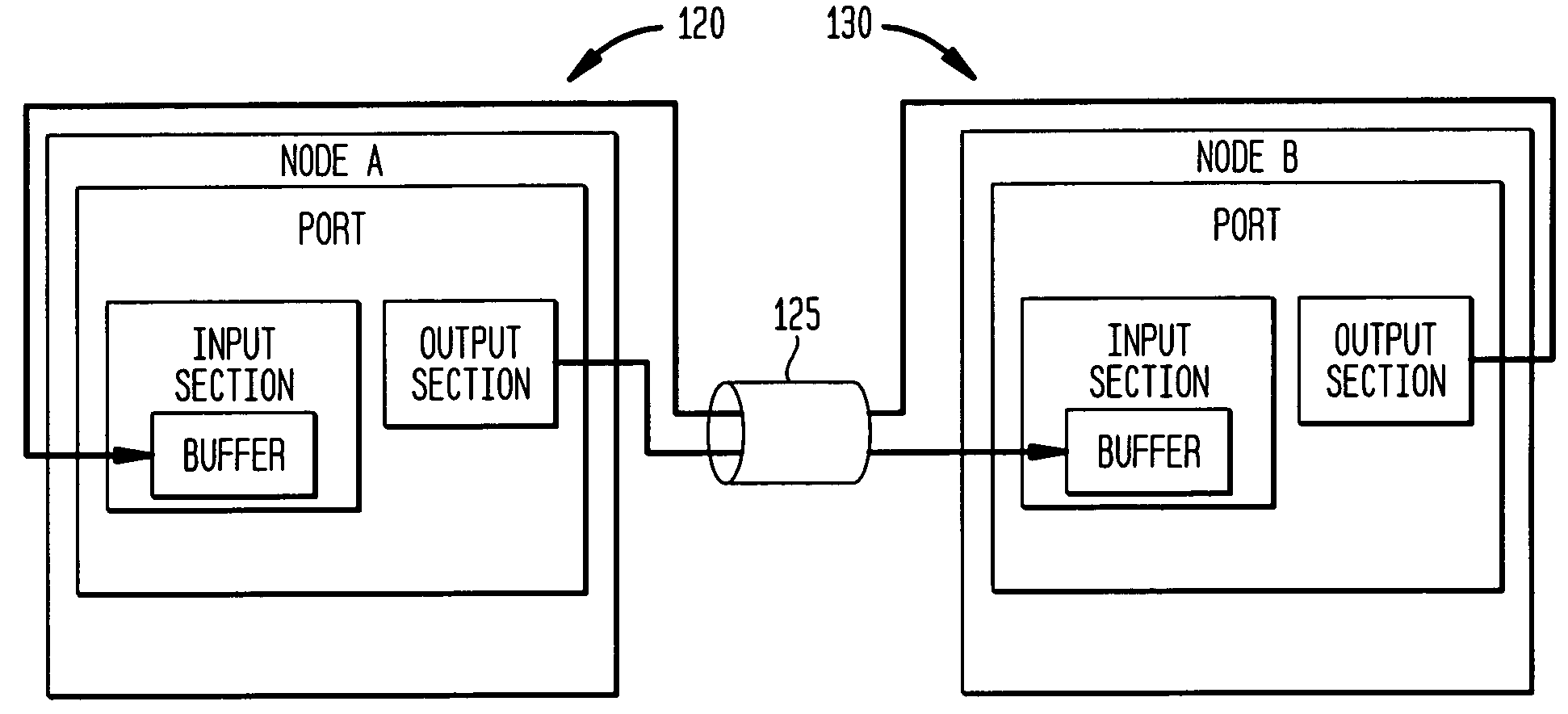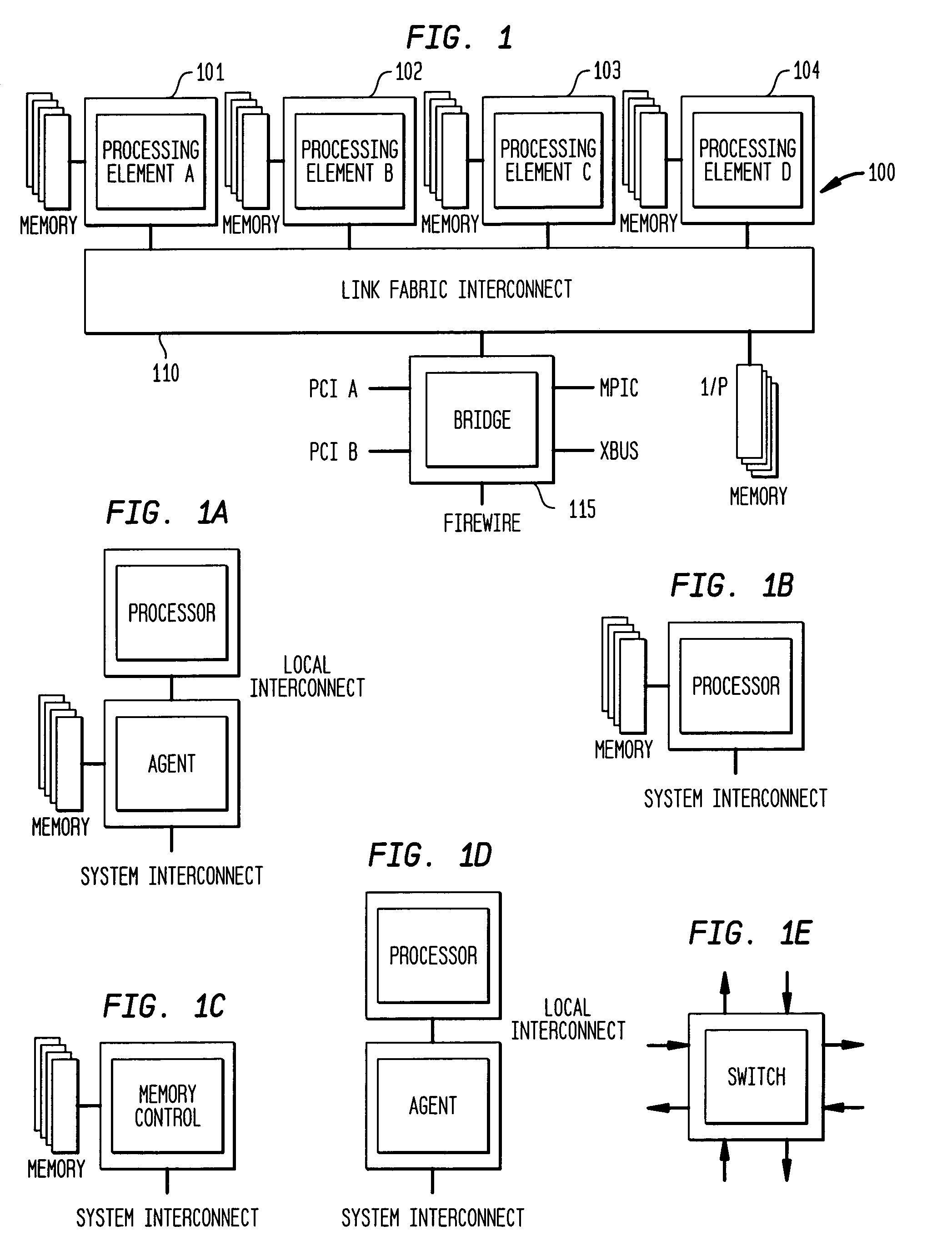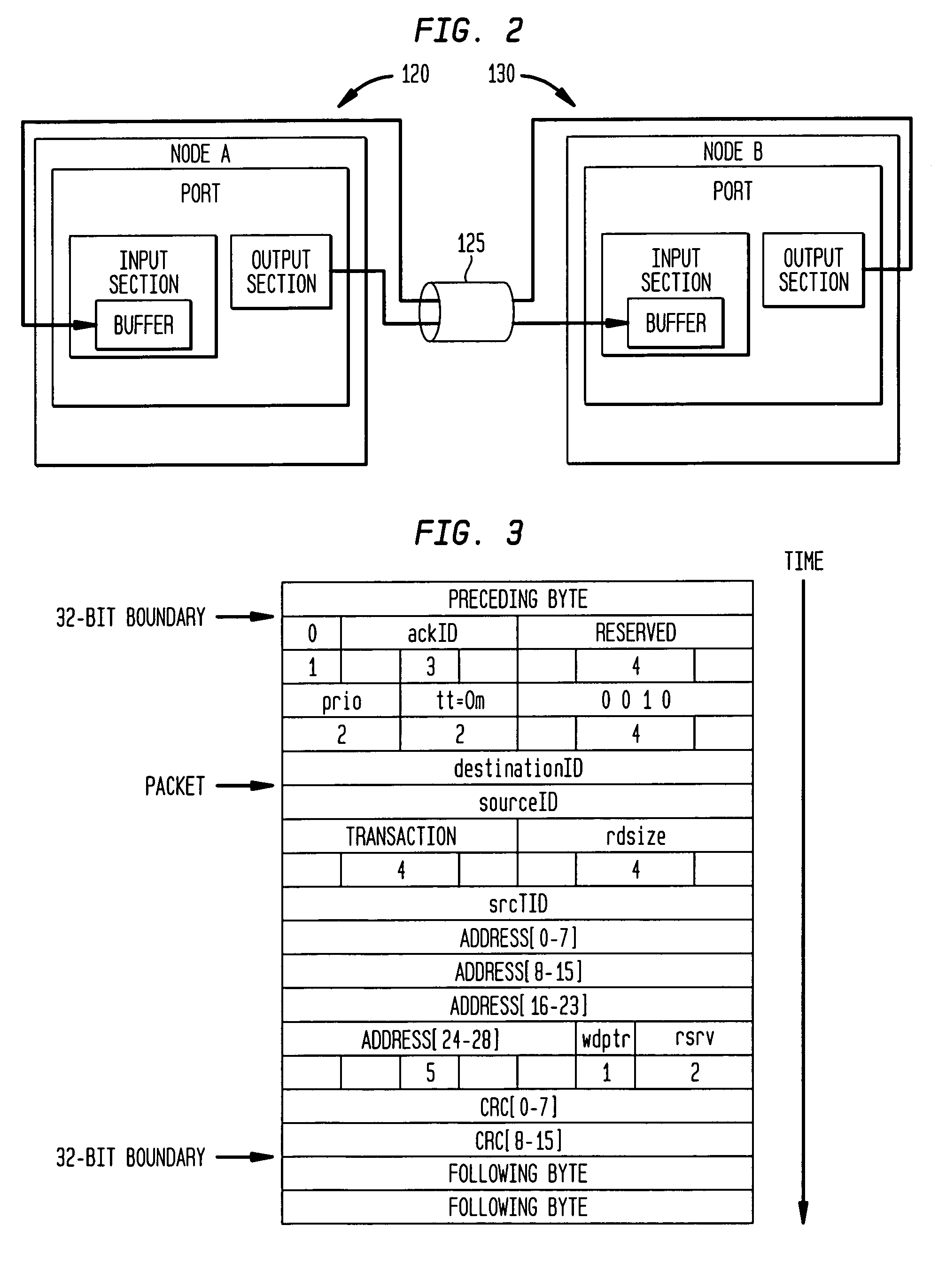Digital data system with link level message flow control
a technology of data flow control and data system, applied in data switching networks, instruments, frequency-division multiplexes, etc., can solve the problems of divergent requirements, burden on developers, and reducing the board space and ultimately the floor space that the components requir
- Summary
- Abstract
- Description
- Claims
- Application Information
AI Technical Summary
Benefits of technology
Problems solved by technology
Method used
Image
Examples
Embodiment Construction
[0038]FIG. 1 illustrates generally an embodiment of a digital data system 100 employing link interconnect message communication in accordance with the present invention. The system includes a plurality of nodes, some of which are shown as digital devices 101, 102, 103, 104, . . . . In the illustrated embodiment, these are processors with associated memories, though, they may also comprise other digital devices capable of generating, handling and / or passing message packets.
[0039]In this regard, it will be understood that messaging over interconnected links as described herein has wide application, e.g., to systems that implement direct memory access, to systems that provide communications between processors in a domain, as well as to systems that provide such communications between lower-level digital devices or components. Examples of the former are provided by FIGS. 1 and 1A. Examples of the latter are provided by FIGS. 1B and 1D (a stand-alone processor or processor / agent with no ...
PUM
 Login to View More
Login to View More Abstract
Description
Claims
Application Information
 Login to View More
Login to View More - R&D
- Intellectual Property
- Life Sciences
- Materials
- Tech Scout
- Unparalleled Data Quality
- Higher Quality Content
- 60% Fewer Hallucinations
Browse by: Latest US Patents, China's latest patents, Technical Efficacy Thesaurus, Application Domain, Technology Topic, Popular Technical Reports.
© 2025 PatSnap. All rights reserved.Legal|Privacy policy|Modern Slavery Act Transparency Statement|Sitemap|About US| Contact US: help@patsnap.com



